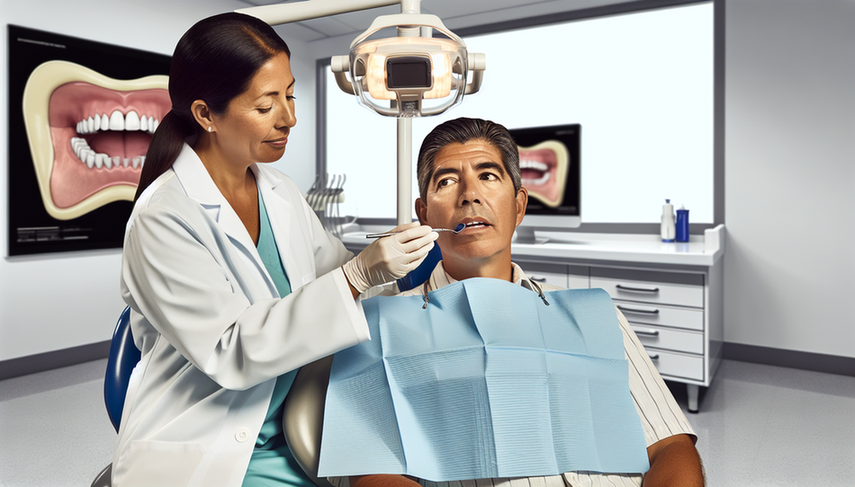Oral Cancer: Stomatological Examination of Oral Lesions and the Importance of Early Detection in Differential Diagnosis

Oral cancer is a disease that, while not among the most common in Western countries, represents a significant public health issue in various regions of the world. The early detection of this type of cancer is crucial due to its high mortality rate and the impact it has on patients' quality of life. A thorough stomatological examination and evaluation of oral lesions are fundamental steps to identify leukoplakia and other potentially malignant lesions that could progress to oral cancer.
Importance of Evaluating Oral Lesions
The clinical evaluation of oral lesions is essential for detecting up to 99% of cases of oral cancer and premalignant lesions. According to the World Health Organization, any suspicious lesion that does not resolve within two weeks should be biopsied. Surgical biopsy remains the gold standard for diagnosing oral cancer, although complementary tools such as vital staining with toluidine blue and autofluorescence imaging have been developed to assist in the diagnostic process.
Additionally, the use of salivary biomarkers is emerging as a promising method for the early detection of oral cancer. Saliva, being in direct contact with the lesions, offers a non-invasive and potentially sensitive pathway for screening these conditions.
Technological Advances and Detection Methods
In recent years, various imaging modalities and approaches based on artificial intelligence have been investigated to improve outcomes in oral cancer. These technologies, although not yet widely adopted, have the potential to enhance diagnostic accuracy and, consequently, clinical outcomes. The combination of imaging techniques with artificial intelligence can facilitate the detection of heterogeneities in oral lesions and improve the identification of tumor margins.
On the other hand, the use of mobile technologies, such as MeMoSA, has proven useful for the early detection of oral cancer, especially in regions with limited access to specialists. These tools allow for the documentation of oral lesions and communication between dentists and specialists for decision-making in patient management.
Conclusions
Early detection of oral cancer is fundamental to improving survival rates and reducing morbidity associated with this disease. Regular stomatological examinations and evaluation of oral lesions should be routine practices in medical care. Advances in salivary biomarkers and imaging technologies, along with the use of mobile tools, offer new opportunities to enhance differential diagnosis and management of these conditions. Implementing these strategies in clinical practice can have a significant impact on reducing mortality from oral cancer.
Referencias
- [1] Oral Cancer and Precancer: A Narrative Review on the Relevance of Early Diagnosis
- [2] Role of Salivary Biomarkers in Oral Cancer Detection
- [3] Improving Oral Cancer Outcomes with Imaging and Artificial Intelligence
- [4] m-Health for Early Detection of Oral Cancer in Low- and Middle-Income Countries
Created 13/1/2025
